Since early 2016, EEM, the popular ETF covering 23 of the world’s leading emerging markets is up over 50 percent. EEM is up about 20 percent this year alone. Investors are naturally nervous that big emerging markets have come too far too fast.
Have emerging markets gone as far as they can go? Do the downside risks outweigh the upside potential?
We don’t think so. We think emerging markets have at least another 20 percent upside potential from here and will very likely soon be making new all-time highs. Moreover, there’s a surprising reason why.
EEM most recently triggered a new Stock State Indicator Entry signal back in August 2016. It dipped into the Yellow Zone a few months later and rocketed back out to new two-year highs.
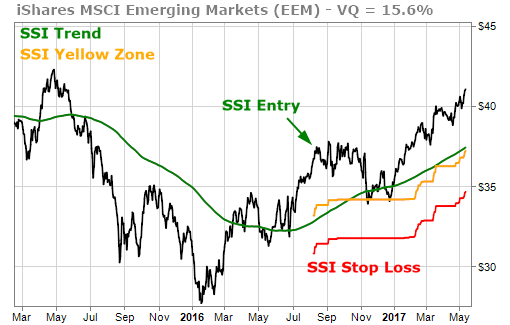
Looking at a longer-term perspective, we can see in this volume-at-price (VAP) chart that EEM recently rose above the big overhead resistance between $35 and $38.
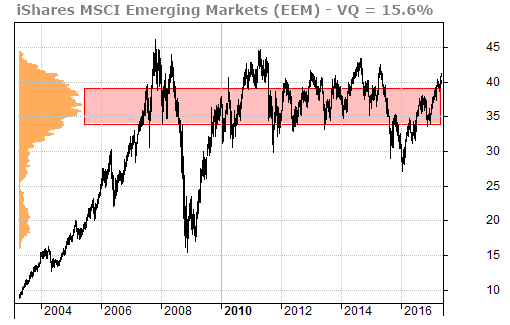
It’s broken above this resistance several times in the past 8 years. So why do I think this time is different?
In a word – oil.
Many of the emerging market economies are reliant on exporting oil. Going back 14 years, it’s easy to see that the price of oil and the performance of the emerging markets are highly correlated.
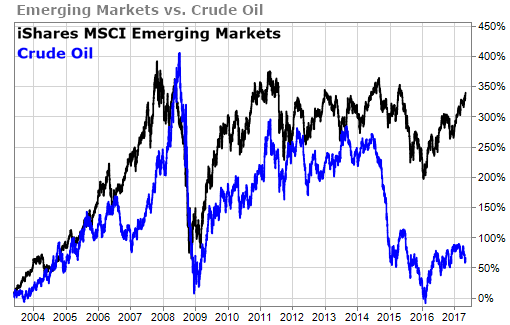
As oil began moving lower in 2014, EEM followed suit. EEM bottomed out in early 2016 at the same time that oil bottomed out, and EEM began moving higher when oil prices started to rebound.
Just as EEM is in the SSI Green Zone, oil is also trading in the SSI Green Zone. Oil triggered a new SSI Entry Signal right around the same time as EEM.
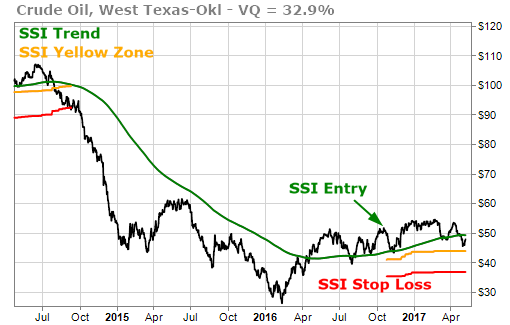
And our time-cycle forecasts support continued moves higher for both assets.
The long-term composite time-cycle forecast for EEM is bullish into 2018.
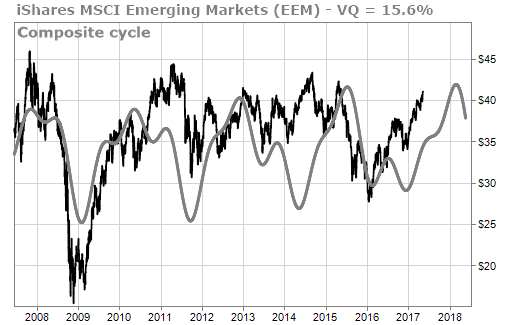
And the strongest long-term cycle for oil is also very bullish.
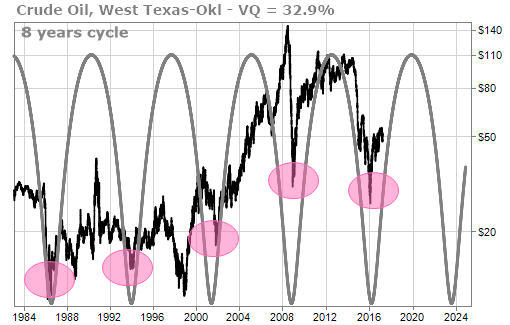
Emerging markets have additional risks that investing in the U.S. and developed markets don’t have, including currency risks and political risks. Those extra risks are expressed in the fact that the VQ on EEM is currently 15.6 percent. That’s nearly 50 percent higher than the current VQ of 10.4 percent for the S&P 500.
Yes, there’s more risk … but you can size your position accordingly. (You do use the TradeStops VQ position size calculator, right?)
We personally think the upside potential in emerging markets outweighs the downside risks … and a big part of that confidence is based on the fact that we’re still bullish on oil.
The setup in emerging markets today is a classic illustration of the fact that you are much more likely to succeed as an investor if you look to “buy high and sell higher” rather than looking to “buy low and sell high.”
It’s a tough lesson for most investors to learn. It goes against human nature. We’re always looking to “get a deal” and “make money on the buy.”
Just remember, financial markets, by their very nature, tend to behave in ways that make as many people as possible feel like fools. We suggest that you look to join the minority of investors that are willing to look like a fool today in order to not actually be a fool tomorrow.
TradeSmith Team





